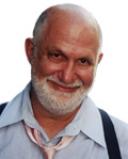Mindfulness
Mindfulness in Addiction and Film
"Where the Wild Things Are" is a monument to mindfulness
Posted October 17, 2009
Mastering Wild Things
Mindfulness is a hot psychological topic. It appears frequently in PT Blogs, often in regard to diet, where it refers to being aware of eating (the taste of food, chewing) to control food and calorie intake.
Alan Marlatt, the great addiction psychologist, has specifically developed mindfulness as a relapse prevention technique, one that assists addicted people to combat cravings. In brief, a user may imagine the urge to use again as a physical challenge - like a wave - that he or she rides out.
Maurice Sendak's classic children's book, Where the Wild Things Are, is a model of mindfulness. Here is a description of the book's plot from the Times:
Max, a young boy in a wolf costume, makes mischief of one kind and another, is called "wild thing" by his unseen mother, and is sent to bed without supper. As he stews, his room transforms into a jungle. He finds a boat and sets sail across the sea to discover a land full of real wild things - big monsters with "terrible teeth" and "terrible roars." Max tames them, plays with them, sends them to bed without their suppers and then returns home, where he finds dinner waiting for him. "And it was still hot," the book concludes - a lovely and reassuring grace note.
"What an empowering, psychologically astute parable about a child learning that his anger, while sometimes overwhelming and scary, can be safely expressed and eventually conquered," Bruce Handy summarized (although he says this was only apparent to him as an adult). I and a colleague, John Conway, with whom I discussed the story (he has just bought it for his young son) both thought, "What an uncanny illustration of mindfulness - of an imaginary battlefield for combating unhealthy urges which then feeds back into Max's real life."
And the film is more so. There are few words in the original story, so that director Spike Jonze had to fill out the screenplay substantially. He embodies a rich interpersonal community among the Wild Things, one that Max joins and creatively and constructively participates in. The Wild Things are a screwy bunch - but not much more so than any group of West Side New Yorkers - which they consistently reminded me of.
Prior to retreating to Wild Things land, Jonze fills in Max's back story brilliantly and creatively. It seems Max is reacting badly to his home situation with his single mother (played by the estimable Catherine Keener). Max often acts out, to his own misery and detriment.
Max relates primarily to two Wild Things. One is a male character whose destructive impulses, created by unfathomable psychological issues he is fighting within himself, reflects Max's own. The other is a soothing female Wild Thing who offers Max protection from his own self-destructiveness. There is no one-to-one mapping of characters, and the motherly beast might also be Max's Super Ego to the first beast's Id. But this motherly figure also suggests the Keener character, who lovingly tries to respond to Max's wanton and hurtful behavior.
When Max leaves his imaginary land, he - like the Wild Things - has made substantial progress in resolving his demons and rectifying his relationship with his Mom. And once again, great art has encapsulated a crucial psychological vision.
Follow Stanton on Twitter


